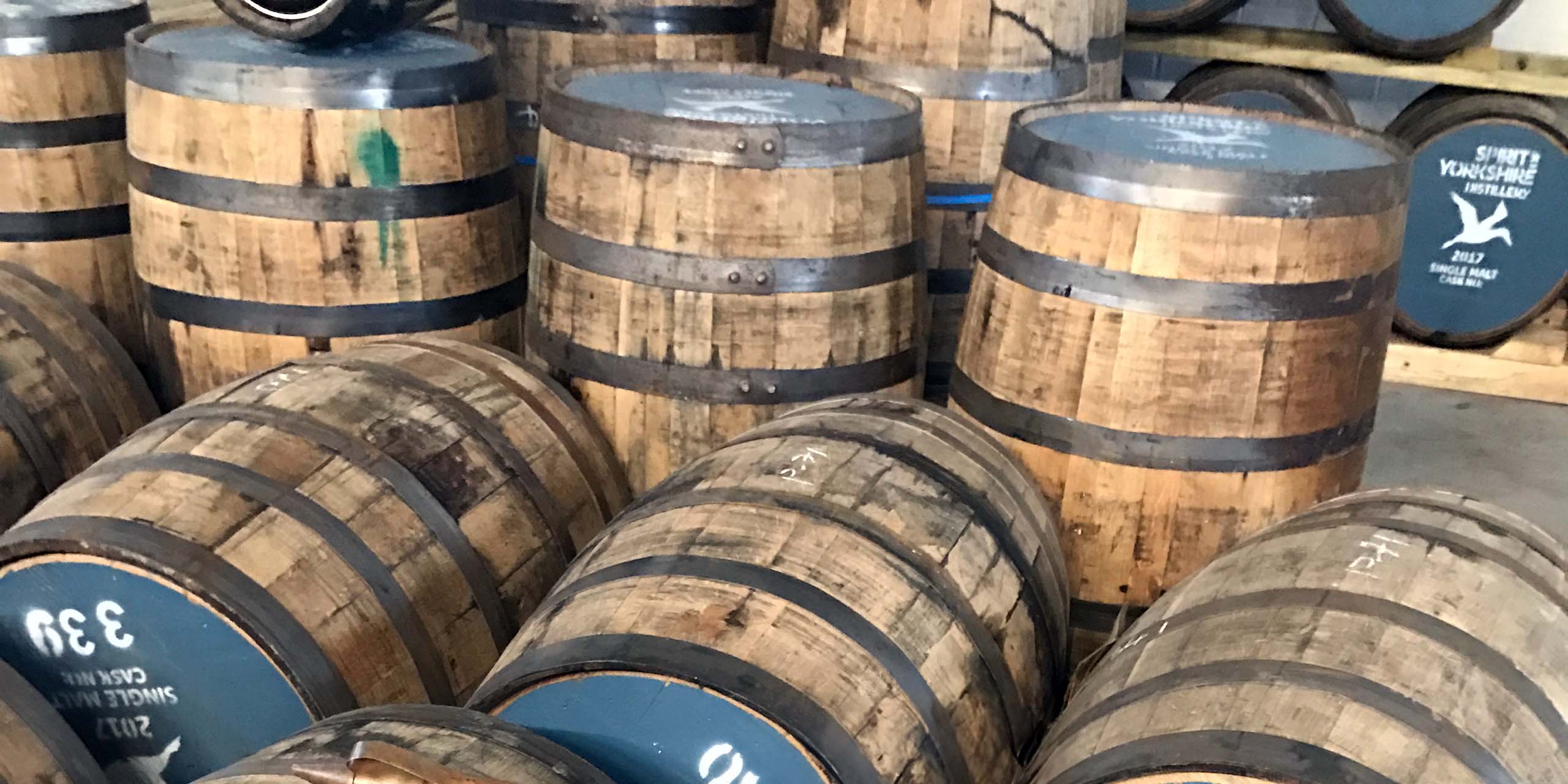Many of the flavours and characteristics of a whisky are picked up from the wooden casks in which it matures. This can be as much as 80% of the final flavour profile. Historically any type of wood could be used but now, by law, they now must be constructed of oak. Read more about How Whisky Casks Are Made.
Oak is tough and yet easy to work with, has tight grain that prevents leaking, is porous and therefore allows the cask to breathe, and can be bent by heat without splitting. Wood is full of naturally occurring compounds and oils, such as vanillin. These compounds and oils are drawn out of the cask by the spirit. Over the period of maturation, they add to the colour, aroma and flavour profile of the whisky.
So, if all whisky is matured in oak casks, how can they all be so different when tasted? The character of the new make spirit, ingredients used, size and shape of stills, and distillery location are all major contributing factors. However, the major factor is the type of oak used for maturation. The shape and size of casks also plays a key role. Read more about Whisky Cask Sizes and Types.
There are three main types of wood used by the whisky industry:
European Oak (Quercus robur)
This type of oak has traditionally been used to mature whisky in Scotland and Ireland for over two centuries. The first recorded casks were made from English or Scottish oak, both subspecies of Quercus robur. These species are slow growing with twisted knots and grain, which made casks prone to leaking. Later Russian oak was imported – this gave more consistent wood structure as the trees grow faster and with straight trunks.
From the 1830s, sherry began being imported from Spain to the UK. Casks used to mature and transport the sherry were made from Spanish oak, which had similar properties to Russian oak but were cheaper. This oak is traditionally grown in the Galicia region of northern Spain. Despite the sherry industry being in decline since the 1970s, Spanish oak is still commonly used and highly sought after. The price of a sherry cask is almost 10 times that of a bourbon cask.
The other type of European oak used in modern whisky maturation is French oak, such as Limousin or Tronçais oak. This is common in the wine and Cognac industries. French oak is mostly used by distilleries to give a different ‘finish’ to their whisky. Rarer is Hungarian oak, which again is often used for maturing wine.
Key flavours
Dried fruits:
sultanas, raisins, candied peel, bitter orange
Spices:
cinnamon, nutmeg
Wood:
oak, sandalwood
Sweetness:
caramel, fudge, toffee
Christmas cake and Sherry
American Oak (Quercus alba)
A relatively recent introduction to the whisky industry. This has only been used since the end of the Second World War. At that time the Cooper’s Union, lawyers and US Government formulated a law that stipulated that all American whiskey had to be matured in new wooden casks. This was done to boost the coopering industry that had collapsed during Prohibition (1920 to 1933) and the years that followed. The result of this law saw a massive increase in the number of casks available, as they could not be used by American distillers for a second time.
The Scots and Irish began using these casks for maturation and the secondary market flourished due to good availability and low prices of ex-bourbon casks compared to ex-sherry casks. Now such casks are used for maturation across the world of spirits such as for rum in the Caribbean, tequila and mezcal in Mexico, and brandy in Europe. American oak is seen as perfect for whisky cask construction – the trees are fast growing and with tall straight trunks, giving good and consistent quality wood and high levels of vanillin.
The two main sizes of cask produced – ASB (American Standard Barrel) and hogshead – are also considered to mature whiskey at the optimum rate. The ratio of liquid quantity and surface area inside the cask is almost perfect. The result is that nearly 90% of all whisky around the world is now matured in American oak ex-bourbon or ex-Tennessee whiskey casks.
Key flavours
Nuts:
coconut, almonds, hazelnuts
Spices:
vanilla, ginger, cinnamon
Sweetness:
honey, butterscotch
Fruits:
apricot, peach, pineapple
Japanese Oak (Quercus crispula)
Also known as mizunara oak, this type of wood is used predominantly in the Japanese whisky industry. However, it has now increased in popularity and can often be seen in other countries. Mizunara was first used in the 1930s and gives whisky a unique set of flavours. The wood has extremely high levels of vanillin but is soft and very porous. This makes casks prone to leaking and easily damaged.
As a result, the practice of maturing whisky was modified to reduce such factors. Now most Japanese whisky is initially matured in either ex-bourbon or ex-sherry casks, before a shorter finishing period in mizunara casks to gain its flavoursome characteristics. Mizunara translates as ‘water oak’ from Japanese – it is named this due to its high levels of water retention – and is native to the cooler climates of northern Japan.
Key flavours
Fresh fruit:
pears, apples
Floral:
citrus and orchard blossom
Spices:
vanilla, nutmeg, cloves
Wood:
freshly sawn wood
Sweetness:
honey, caramel







